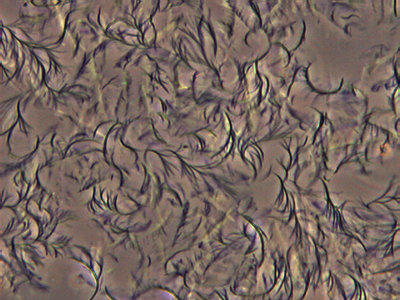Trans fat alternative - vegetable oils structured with low-calorie sugars
The low-calorie sugars mannitol and sorbitol have been used as a structuring agent to transform vegetable oils into semi-solid ‘structured oils’. This technique could be used to provide alternatives to trans fats which have been linked to coronary artery disease, obesity and diabetes.
Structured oils are oils are not new - a classic example is the conversion of vegetable oil into margarine. Icings and confectionery products also use quantities of semi-solid oils and, currently, trans fats are frequently used in these products. Now it is possible that the research conducted by The City College of New York will give formulators an alternative to trans fats.
The team, led by Professor of Chemistry George John, tested two sugar alcohol-based gelators, mannitol dioctanoate (M8) and sorbitol dioctanoate (S8), as structuring agents for four refined vegetable oils: canola oil, olive oil, soybean oil and grape seed oil. Both gelators are amphiphiles, molecules that are attracted to water and fats, and consist of two octanoic acid chains (C8) appended to a sugar alcohol molecule.
“We have demonstrated the first sugar-based thickening agents for oil,” said Professor John, whose previous investigations into the use of amphiphiles to solidify oil in the presence of water demonstrated their potential use in oil-spill clean-ups. He added that the two agents meet both Food & Drug Administration and GRAS (Generally Recognised as Safe) safety specifications, so they can be used for food processing.
Both M8 and S8 demonstrated excellent gelation tendencies for all of the oils that were tested, and the gels remained stable for several months. When mixed with the oils, the gelation agents self assembled into three-dimensional crystalline networks that encapsulated the oils in liquid stage. Optimal gelation was achieved at structuring agent concentrations between 3 and 5%.
However, some differences between the two agents were reported. For example, mannitol gels were opaque in appearance while those made with sorbitol were translucent. That was because M8 yields a more densely packed network while the network of S8 gels consisted of needle-like microcrystallites.

Mannitol was found to be a more efficient gelator, producing stronger gels. However, Professor John pointed out that sorbitol-based gels, which have finer structures and appear more translucent, would be better suited for specific applications. “The multifunctionality and tunability of sugar-based gelators presents opportunities to develop next-generation oil thickeners,” he added.
The findings have been published in the Journal of Agricultural Food Chemistry.Source.
Eggless muffins using clean-label texturiser
Bakery solutions specialist Lasenor Emul, S.L. has crafted muffins with 50–100% less egg...
DNA base editing could enable better probiotic strains
Thanks to DNA base editing technology, researchers have created a strain of...
Tree sap: a plant-based gelatine alternative?
Researchers from the University of Ottawa may have found a new plant-based alternative to...








